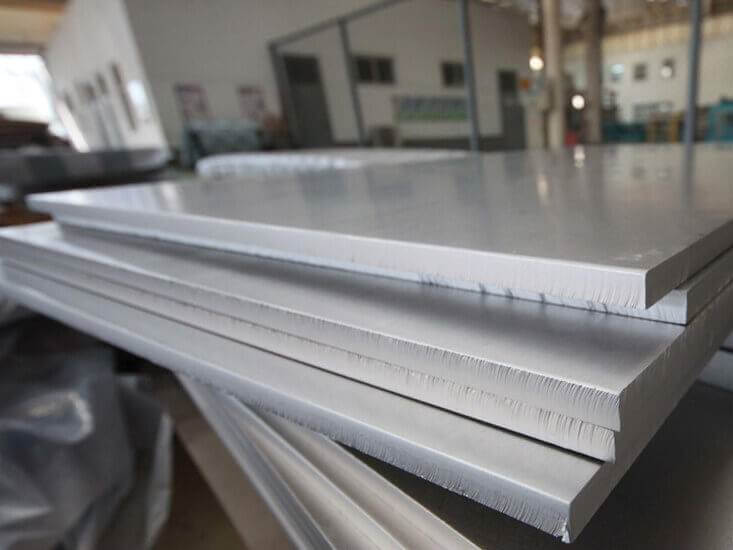In the world of advanced materials, titanium plates stand out for their exceptional strength, lightweight properties, and corrosion resistance. Whether you’re in aerospace, automotive, medical, or industrial applications, choosing the right titanium plate can significantly impact your project’s success. As we move into 2024, understanding the latest developments in titanium plate technology and selecting the best option for your specific needs is crucial. This guide will walk you through the factors to consider when choosing a titanium plate, helping you make an informed decision.
Understanding Titanium Plates
Titanium plates are made from titanium, a metal known for its remarkable properties. Titanium’s strength-to-weight ratio is superior to that of steel, making it an ideal choice for applications requiring a combination of strength and lightness. Additionally, titanium’s resistance to corrosion, particularly in harsh environments, makes it valuable in industries like aerospace and marine.
Key Factors to Consider
When selecting the best titanium plate for your needs, consider the following factors:
1. Grade of Titanium
Titanium plates come in various grades, each offering different properties and suitable for specific applications:
- Grade 1: Pure titanium with high corrosion resistance and excellent formability but lower strength.
- Grade 2: Also a pure titanium but with improved strength and corrosion resistance compared to Grade 1.
- Grade 5 (Ti-6Al-4V): An alloy with 6% aluminum and 4% vanadium, known for its high strength, excellent fatigue resistance, and good corrosion resistance. This grade is widely used in aerospace and high-performance applications.
- Grade 9 (Ti-3Al-2.5V): Contains 3% aluminum and 2.5% vanadium, offering a balance of strength and ductility. It’s commonly used in the aerospace and sporting goods industries.
Choosing the right grade depends on your application’s specific requirements, such as strength, weight, and environmental exposure.
2. Thickness of the Plate
Titanium plates come in various thicknesses, typically ranging from a few millimeters to several centimeters. The thickness required depends on the intended use:
- Thin Plates: Suitable for applications requiring lightweight and flexible materials, such as in certain aerospace components.
- Thick Plates: Used in applications demanding high strength and durability, like structural components in heavy machinery or defense applications.
Evaluate the mechanical load and environmental conditions your plate will face to determine the appropriate thickness.
3. Surface Finish
The surface finish of a titanium plate affects its performance, aesthetics, and suitability for specific applications:
- Mill Finish: The standard finish, often used for industrial applications.
- Polished Finish: Provides a shiny appearance and is used in applications where aesthetics are important.
- Anodized Finish: Offers additional corrosion resistance and can be colored for visual identification.
Consider the operational environment and any aesthetic or functional requirements to choose the best finish for your needs.
4. Manufacturing Tolerances
Titanium plates are manufactured to meet specific tolerances, which can impact their performance and fit:
- Standard Tolerances: Typically acceptable for general applications where precision is not critical.
- Precision Tolerances: Required for applications demanding exact dimensions and high performance, such as in aerospace components.
Assess the precision requirements of your application to ensure the plates meet the necessary tolerances.
5. Corrosion Resistance
One of titanium’s key benefits is its excellent corrosion resistance, but this can vary depending on the alloy and environment:
- Aerospace Applications: Often require high resistance to oxidation and other forms of corrosion.
- Marine Environments: Demand exceptional resistance to saltwater corrosion.
Identify the corrosive elements your plate will be exposed to and choose an alloy with the appropriate resistance.
6. Cost and Budget
Titanium plates are more expensive than many other metals, so budgeting is essential:
- High-Grade Titanium: Typically costs more due to its superior properties and processing requirements.
- Lower-Grade Titanium: More cost-effective but may not offer the same performance.
Balance your budget with the required performance characteristics to find a cost-effective solution without compromising on quality.
7. Supplier and Quality Assurance
Choosing a reputable supplier is crucial for ensuring you receive high-quality titanium plates:
- Supplier Reputation: Look for suppliers with a track record of delivering high-quality products and excellent customer service.
- Certifications: Ensure the supplier provides certifications and quality assurance documentation, such as ASTM standards or ISO certifications.
Research potential suppliers and verify their credentials to ensure you’re getting a reliable product.
Steps to Choose the Best Titanium Plate
- Define Your Requirements: Clearly outline the specifications and performance criteria for your application, including grade, thickness, surface finish, and environmental conditions.
- Consult with Experts: Reach out to industry experts or suppliers for advice on the best titanium plate for your needs. They can provide valuable insights and recommendations based on your specific application.
- Compare Options: Evaluate different grades, finishes, and suppliers based on your requirements. Consider factors like cost, quality, and delivery time.
- Test and Validate: If possible, obtain samples or conduct tests to verify that the titanium plate meets your performance criteria before making a large purchase.
- Make an Informed Decision: Based on your research and testing, choose the titanium plate that best fits your needs, ensuring it aligns with your performance, budget, and quality requirements.
Choosing the best titanium plate for your needs in 2024 involves careful consideration of various factors, including grade, thickness, surface finish, and corrosion resistance. By understanding these factors and following a structured approach to selection, you can ensure that you choose a titanium plate that meets your specific requirements and delivers optimal performance. As technology and materials continue to evolve, staying informed about the latest advancements in titanium plate technology will help you make the best choices for your projects.
